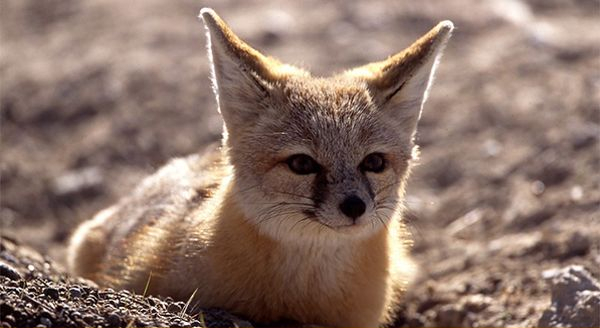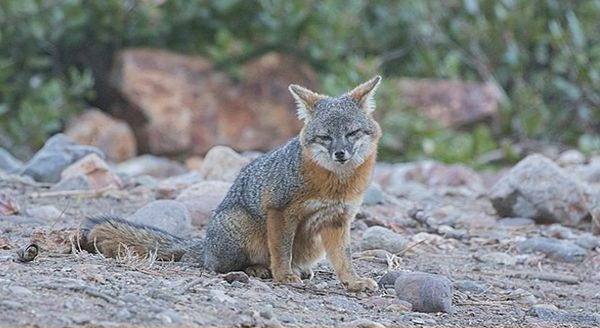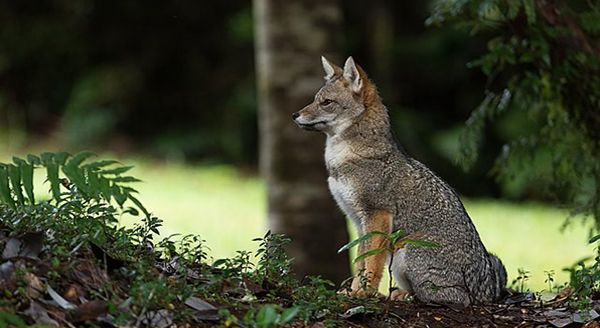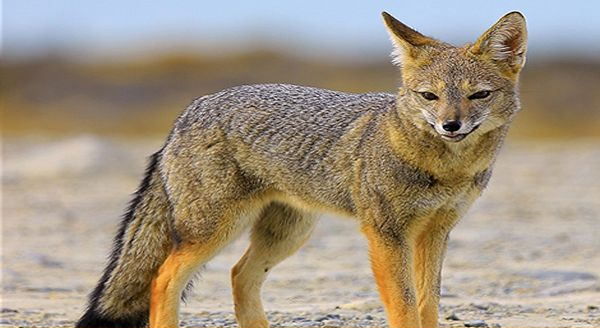Of course! There are various types of foxes, from the most common in the wild to the rarest who reside on islands and isolated forests.
One fact remains the same whether you think these creatures are pretty cunning or adorable like your cats and dogs- they’re indeed one of the most fascinating animals on earth. They are widely distributed across the Arctic Regions, Asia, Europe, North and South America, and North Africa. With nearly two dozen existing species, how many can you name?
Types of Foxes
Foxes are small to medium-sized animals from the family Canidae. They generally have a flattened skull, triangular ears, and a pointed and slightly upturned snout. But with the existence of different species, each has distinct features and behavior which make them unique from the other.
Here are the different species of foxes:

Red Fox
There are different types of foxes, the most common of which is the red fox (Vulpes vulpes). This species is the largest of the true foxes and is found in many different parts of the world.
These species have elongated bodies with short limbs and bushy tails, usually longer than half of their body. They have five digits in their forepaws and four on their hind feet, aiding their ability to swim and jump as high as 2 meters.
Red foxes root extensive hunting by humans for centuries. Luckily, their fierce behavior allowed them to reproduce and multiply in the wild. However, their species is listed as a “least concern” by the International Union for Conservation of Nature.
Foxes are a common sight in many parts of the world. They come in different colors, including red, gray, and black. Foxes are known for their intelligence and cunning, which has helped them survive in the wild for centuries.
Arctic Fox
The arctic fox is undoubtedly the easiest to identify, mainly because of their elegant coloration. The arctic fox (Vulpes lagopus) is a small fox that lives in the coldest areas of the world. Like Polar Bears, artic foxes reside in treeless coastal areas, particularly in the Aleutian Islands of Alaska to the eastern border of Canada.
The arctic fox is a small carnivore, feeding on rodents, birds, and other small animals. These animals have a white or blue-gray coat which provides camouflage in the snow. They have furry soles on their feet, providing insulation against freezing ground. They also have a thick coat of fur, which keeps them warm in the coldest weather conditions.

Swift Fox
The swift fox (Vulpes velox) is a small fox that once inhabited the Great Plains of North America. These creatures have short, slender legs and bushy, black-tipped tails. They are reddish-brown in color with light gray markings on their backs and sides.
Swift foxes are nocturnal animals and are very active during dawn and dusk. They live in underground dens and use their long bushy tails as blankets to keep themselves warm.
Most of these creatures dwell in grasslands, while some are in desert environments. Like the red foxes, swift foxes almost reached extinction during the 1930s because of predator control programs. These programs are, fortunately, no longer in effect in most states, and their population has slowly recovered. This species is now listed as “least concern” by ICUN.

Kit Fox
Kit foxes and swift foxes have a long story from mammalogists (individuals who study mammals). Both of these groups have been confused with being conspecific with each other. But thanks to their studies and hypothesis tests, they are identified as distinct from one another.
The kit fox (Vulpes macrotis) is a small North American fox. They are characterized by their large ears, long legs, and narrow muzzle. They have sandy to rusty-red coloration with white markings on their throats, chests, and underparts. These animals live in arid regions of North America, such as deserts and scrublands.

Gray Fox
The North American species of fox, called gray fox (Urocyon cinereoargenteus), or also called the “tree fox,”. Thanks to their semi-retractable claws, they are the only fox species that can climb trees.
Gray foxes have grizzled, salt-and-pepper fur and a black-tipped tail. They have white fur on their throats and bellies. Adult gray foxes usually range from 2 to 3 feet in length, with a tail that adds another 15 inches to their overall length.
These animals are mostly found in woodlands but can also adapt to live in more urban areas, such as neighborhoods and parks if constant food is available.

Island Fox
The island fox (Urocyon littoralis) is a small fox native to six of the eight Channel Islands off the coast of California. There are four subspecies of island foxes, each unique to its island.
These animals have grizzled gray or rusty red fur. They have white markings on their throats and bellies. Their tails are black-tipped, and they have large ears relative to their body size.
Island foxes are the smallest members of the dog family in North America. They weigh 4 to 7 pounds and are about a foot long, with a tail adding another 6 to 7 inches.
Because island foxes have no natural predators, they are not afraid of humans and will often approach them.

Crab-eating Fox (Cerdocyon thous)
The crab-eating fox (Cerdocyon thous) is a South American fox that ranges from Panama to Argentina. It is called the “wood fox” or “forest fox” because it lives in forests. However, it is not closely related to true foxes.
These foxes are grayish-brown in color, with red parts on their head and legs, and their ears and tails are black-tipped. Like other members of the fox family, they have short, durable legs and long, bushy tails.
Their coat is specifically short but thick. While most are grayish-brown in color, there are members of this species with yellowish, pale, or dark gray in coloration.
Genus Lycalopex
The genus Lycalopalex encompasses various fox species, commonly termed South American foxes. But as previously mentioned, these species are not true foxes. They are special and unique creatures who are more related to wolves and jackals. These foxes appeared to be similar in features to true foxes because of evolution.
Some examples of these South American foxes are the culpeo fox (Lycalopex culpaeus), the Patagonian fox (Lycalopex griseus), and Darwin’s fox (Lycalopex fulvipes).
These species have various colors and patterns, but all share the following characteristics: short yet thick fur coats, large ears, long legs, and long bushy tails.

Darwin’s Fox
We already identified the arctic fox as white as snow. Now, we’re diving into Darwin’s foxes, which almost appear black.
Darwin’s fox (Lycalopex fulvipes) is a small endangered South American fox. It is the only member of the genus Lycalopex found on the island of Chiloé in southern Chile. This species is the size of a domestic cat and live in temperate rainforests and shrubby forests.
The males and females of this species display no significant difference, except that males mostly have broader muzzles. The males also tend to be different from other male fox species. Male foxes do not seem to be territorial or aggressive when other males are near their territory.

South American Gray Fox
The South American gray fox (Lycalopex griseus), also known as the Patagonian fox, is a species of fox endemic to Argentina, Chile, and Uruguay.
This species is intermediate in size between the culpeo fox and Darwin’s fox. They have a relatively broad head and muzzle. The tips of their tails are black, and their coats are grayish-brown with rusty tones.
What distinguishes this species the most is the coloration of their fur. South American gray foxes have two pelage phases: “normal” and “melanistic.” The melanistic phase is when the animal’s coat appears black instead of gray due to a surplus of the pigment melanin.
This species is nocturnal and generally solitary. However, pairs have been seen together during the day. They are proficient climbers and can often be found in trees.

Pampas Fox
The Pampas fox (Lycalopex gymnocercus), also called the “hoary fox,” is a South American fox species. It ranges from Uruguay and southern Brazil to northern Argentina.
Unlike others, Pampas foxes appear to have a wider snout. They have a black mark on their muzzle, and short, dense, gray fur dominates their body. These foxes also have triangular ears, which are relatively large and broad. It has reddish coloration on the outside, while the inner surface is white.

Sechuran Fox
The Sechuran fox (Lycalopex sechurae), also known as the red desert fox, is a small-sized canid found in the Sechura Desert of northern Peru and southwestern Ecuador.
This species is characterized by its long, thin muzzle and large ears. Their pelage is grayish in color and becomes more yellowish towards the flanks. The tips of their tails and legs are black, while the rest of their bodies are pale shades of red and brown.
As mentioned earlier, Sechuran foxes have large ears. These are their primary means of heat loss in their hot desert environment.
Cozumel Fox (Urocyon sp.)
The island of Cozumel off the coast of Mexico is home to a species of fox known as the Cozumel fox (Urocyon sp.). This canid is the only member of its genus found on the island. It is similar to a gray fox but has a stockier build. The pelage of this species is a grizzled grayish-brown color.
The Cozumel fox is nocturnal and very rare. In fact, it is considered one of the rarest canids in North America. The species is thought to number fewer than 100 individuals.

Which is the rarest fox?
The rarest fox is the Sierra Nevada Red Fox. This species is only found in the Sierra Nevada mountains of California. It is the largest member of the red fox family and has a distinctive reddish-orange coat.
The Sierra Nevada red fox is one of the rarest animals in North America. Fewer than 50 individuals are thought to remain in the wild. Other one-of-a-kind species with the rarest sightings include Darwin’s fox, Joaquin kit fox, Simien fox, and the island fox.
Other Fox Species
We’ve only discussed half of the extant species of fox. There are still over ten species that may be roaming the quietest forests on earth. These species include the Indian fox, Cape fox, Pale fox, Tibetan sand fox, Hoary fox, Fennec fox, Bengal fox, and Corsac fox.
Have A Fox Infestation Problem? Call Us Today!
Have you been encountering pests or wildlife infesting your home? We know it’s annoying! They can also damage your home and bring health risks for you and your family.
Our experts from AAAC Wildlife Removal are experienced in dealing with all sorts of pests and wildlife, including foxes. So if you think you have a fox infestation problem, call us today! We’ll take care of it for you!
Summary
Foxes are fascinating creatures, and there are various types of these animals. The most common foxes are the red fox, the arctic fox, the swift fox, and the kit fox. Each of these animals has unique characteristics that make them special.
Now that you know a little more about the different types of foxes, which one is your favorite? Do you like the playful arctic fox? Or the regal gray fox? Maybe you’re a fan of the island fox, the smallest member of the dog family in North America. No matter which fox you choose, they’re all fascinating creatures!













